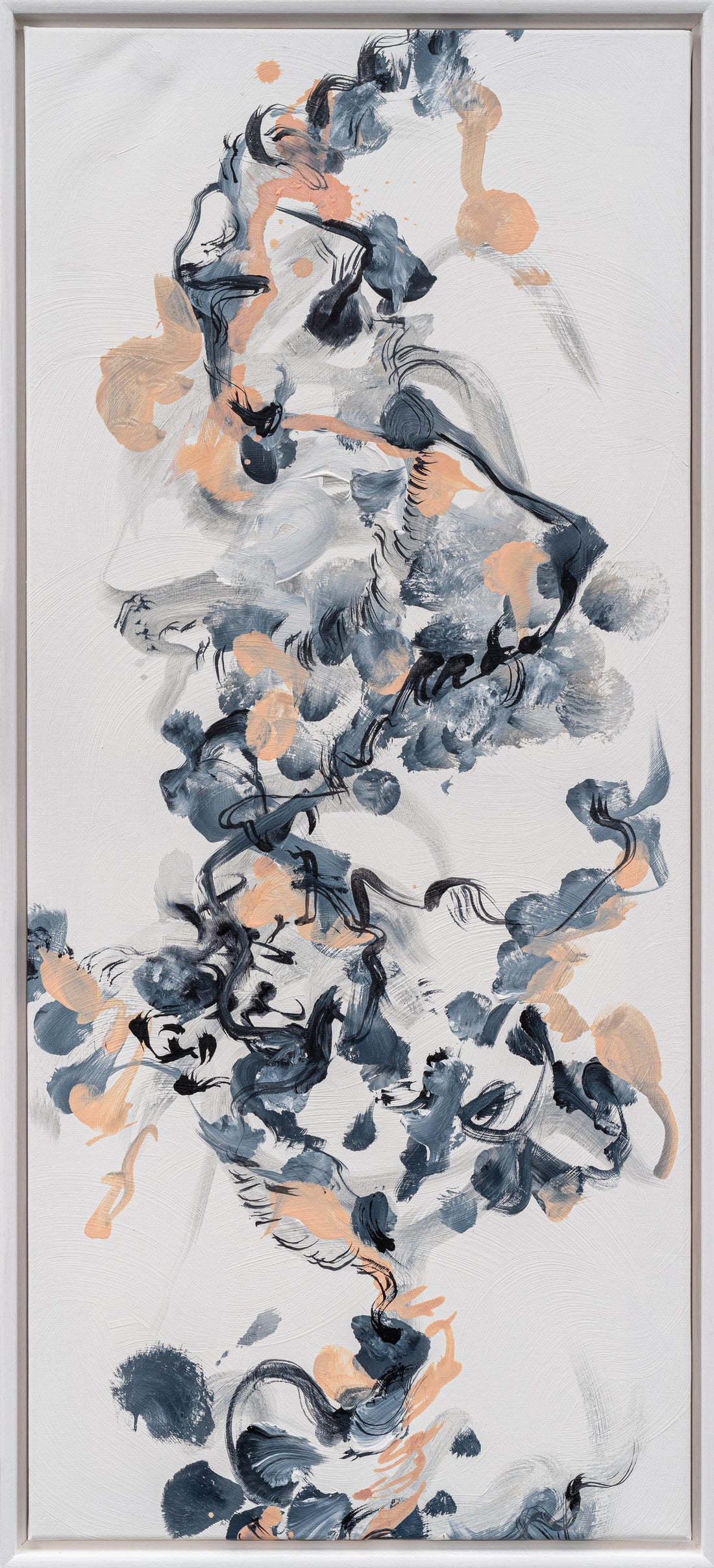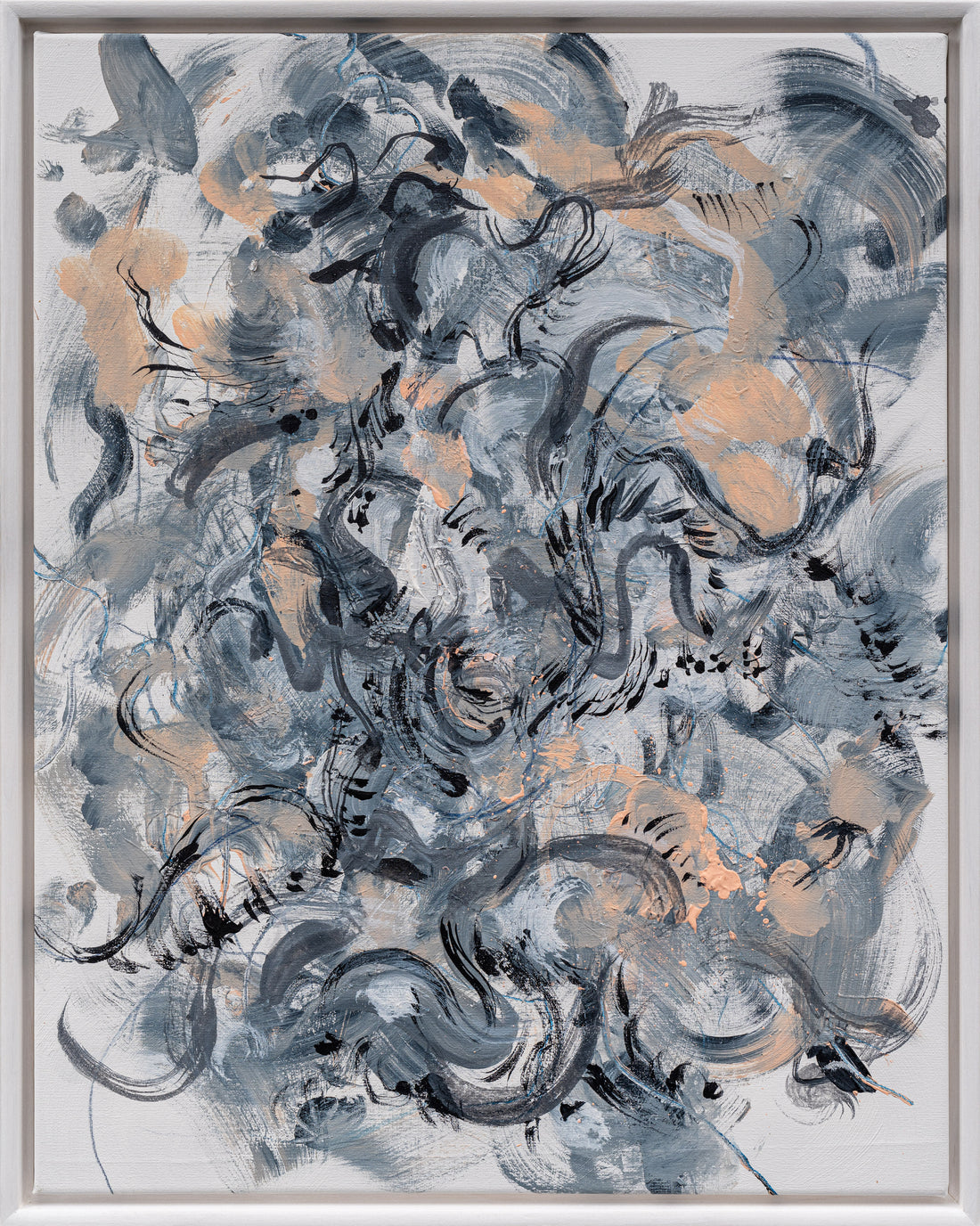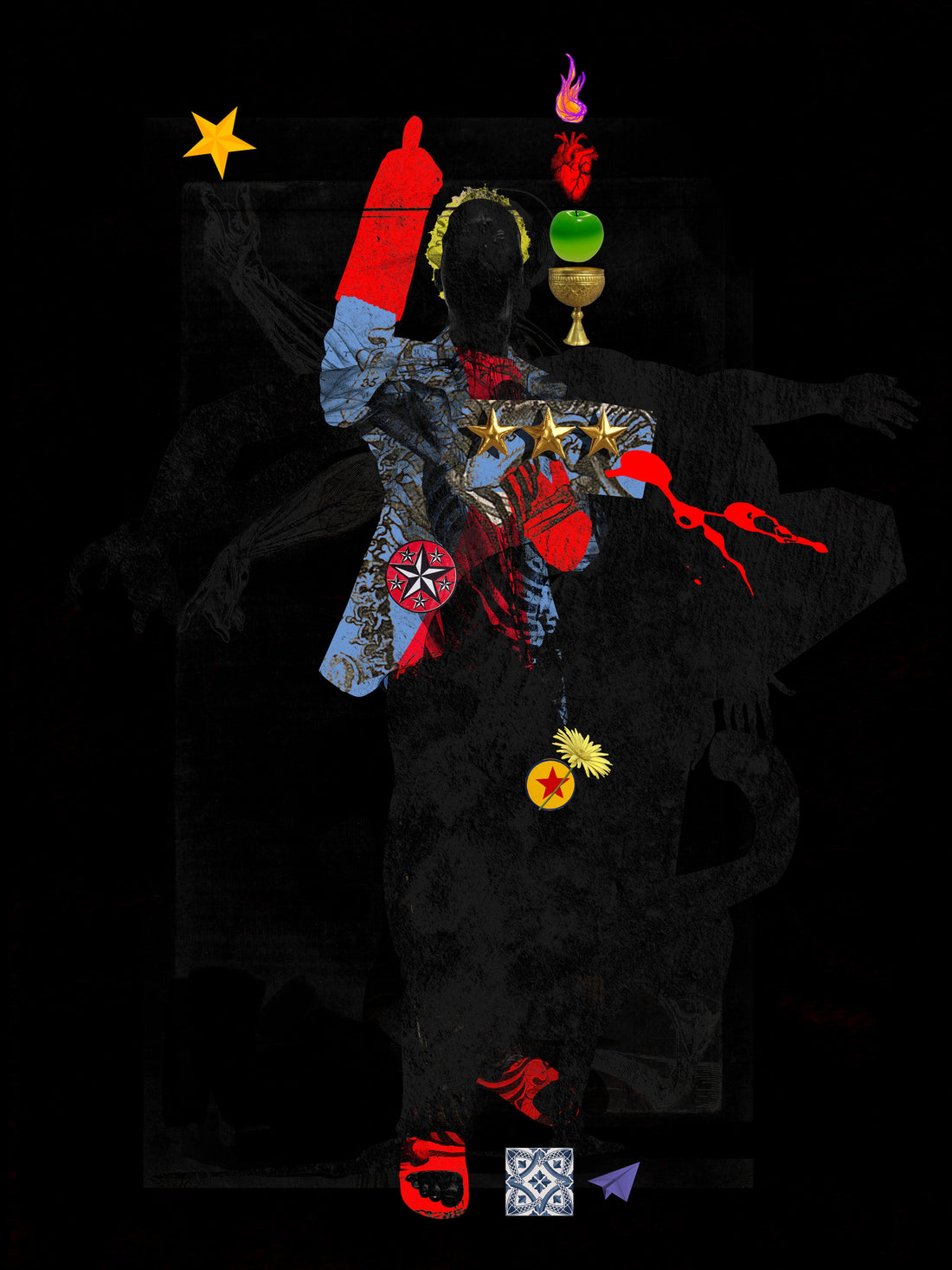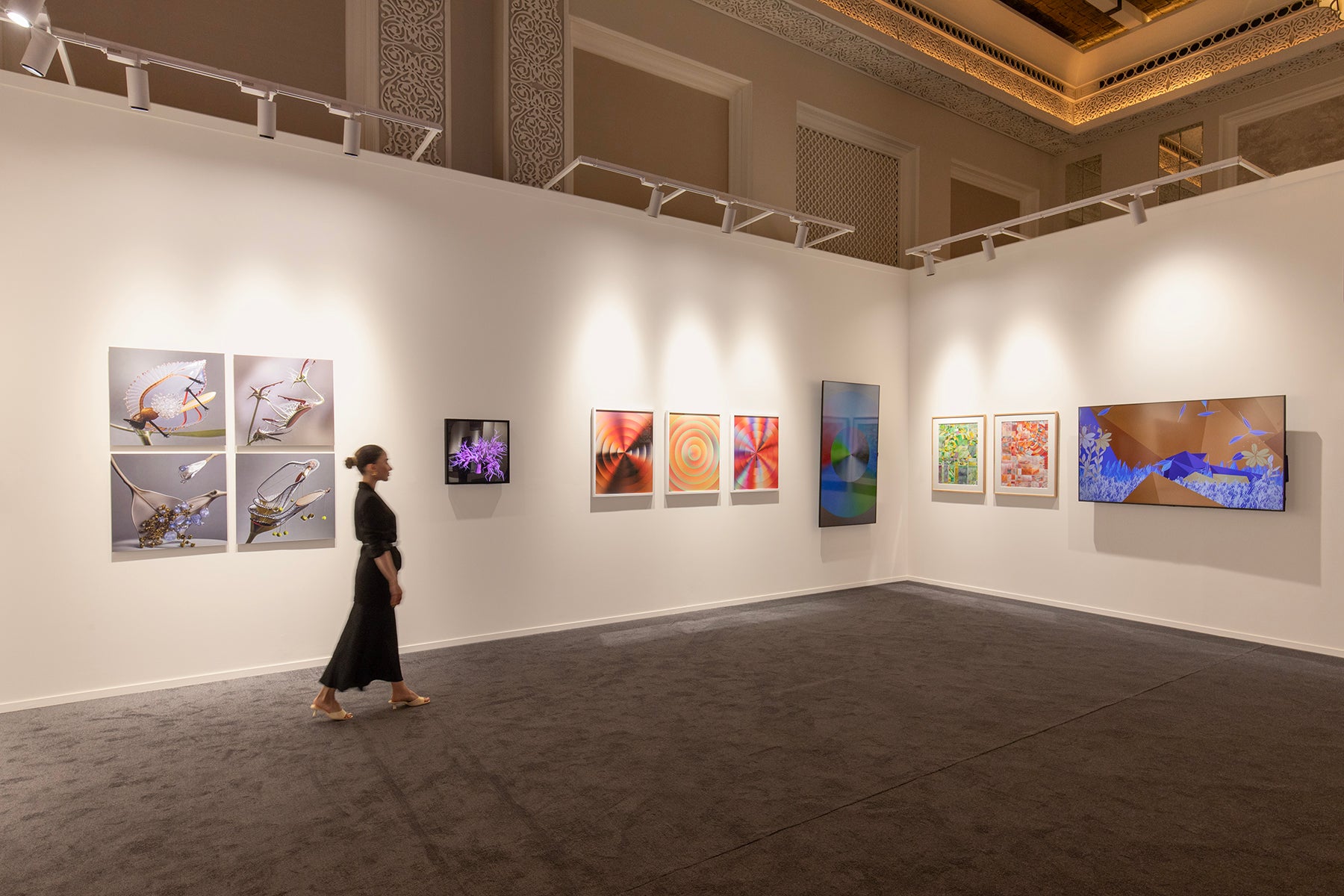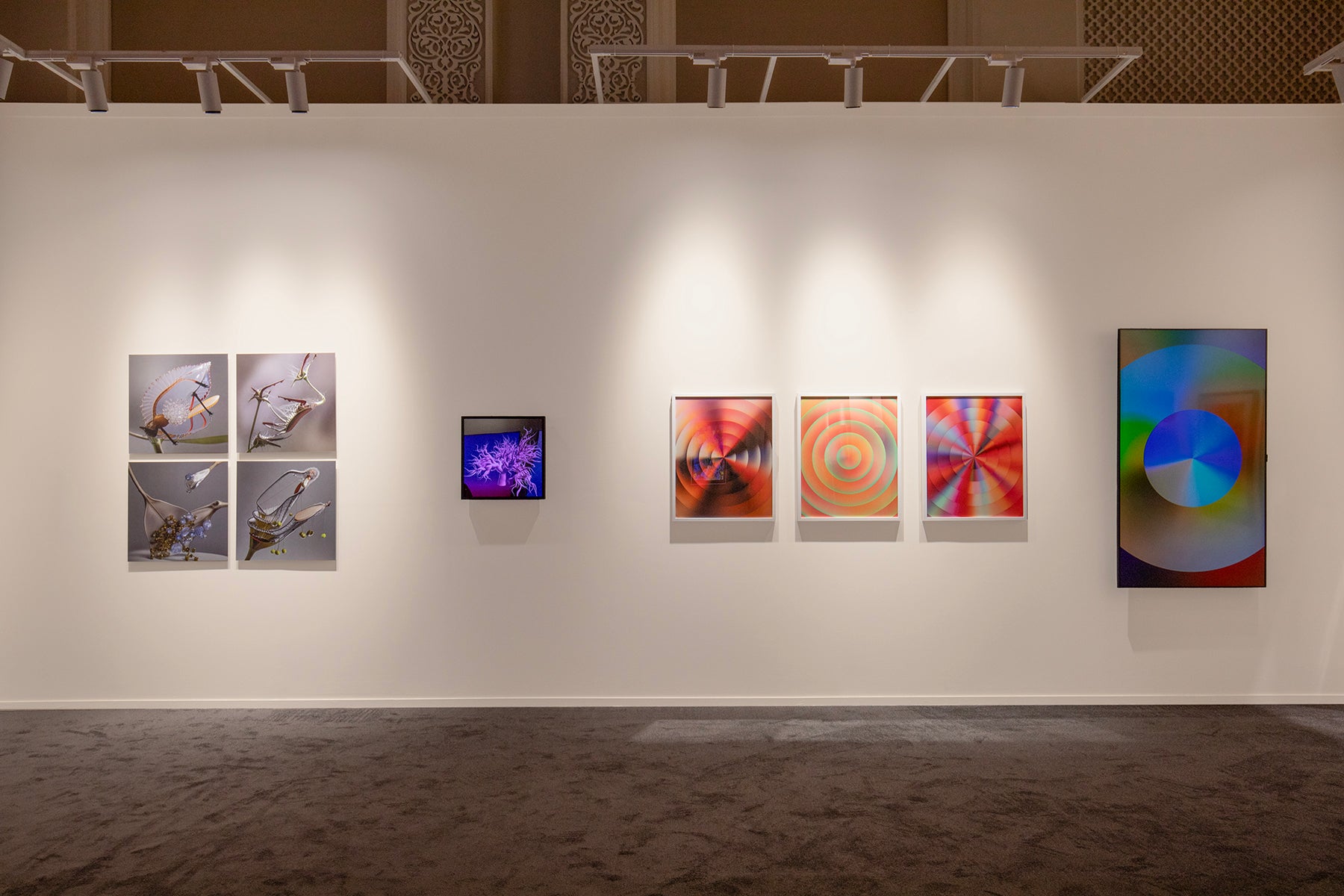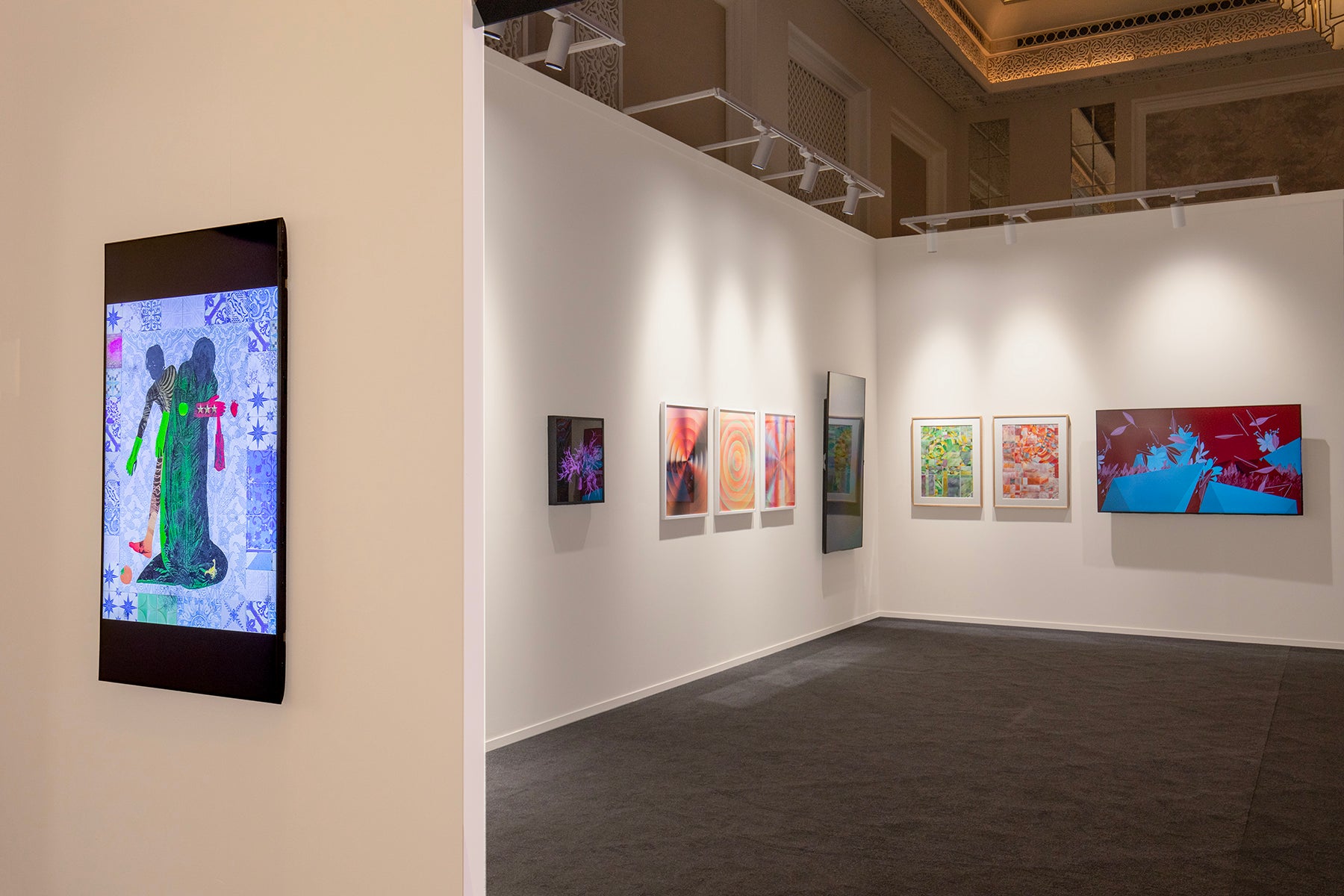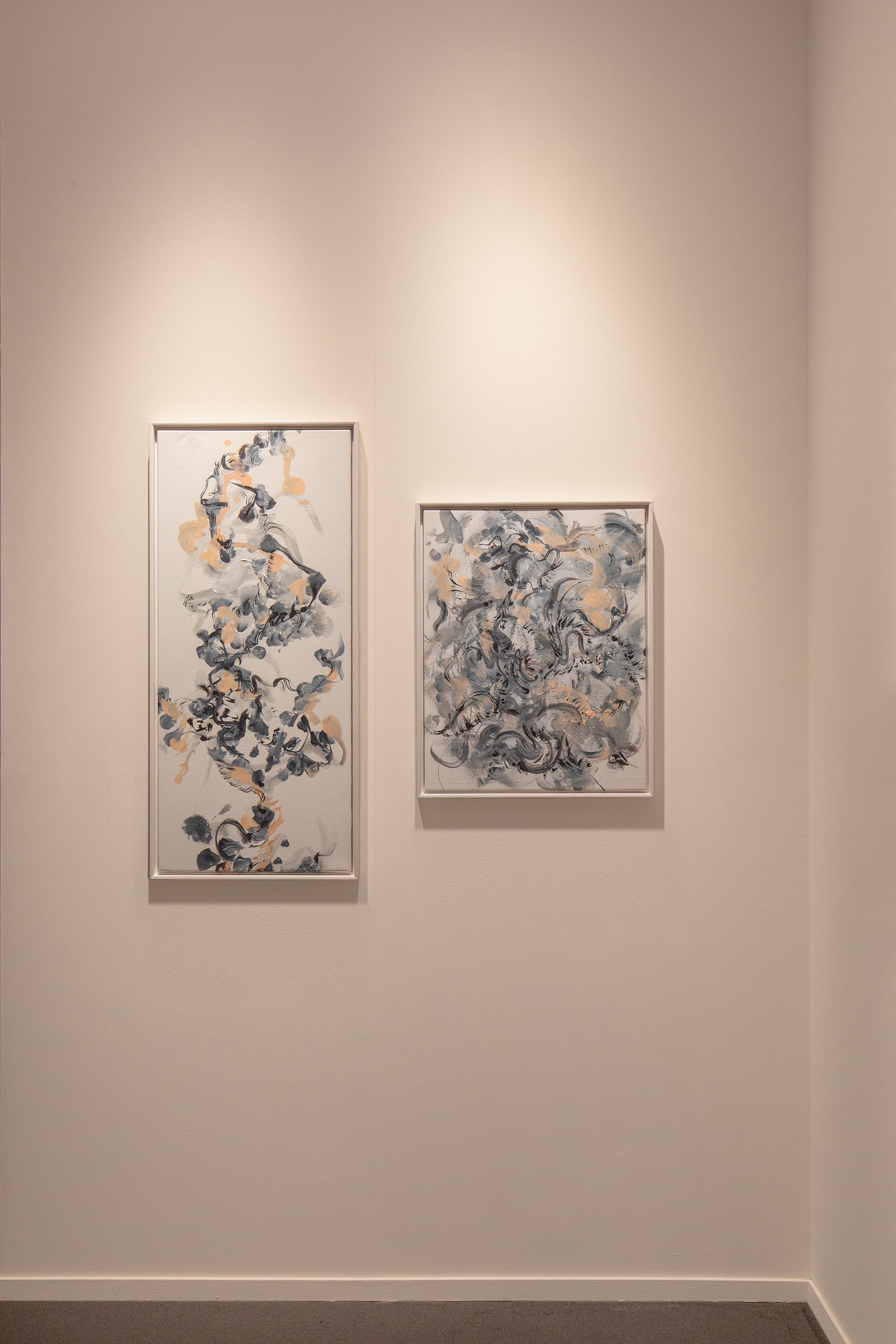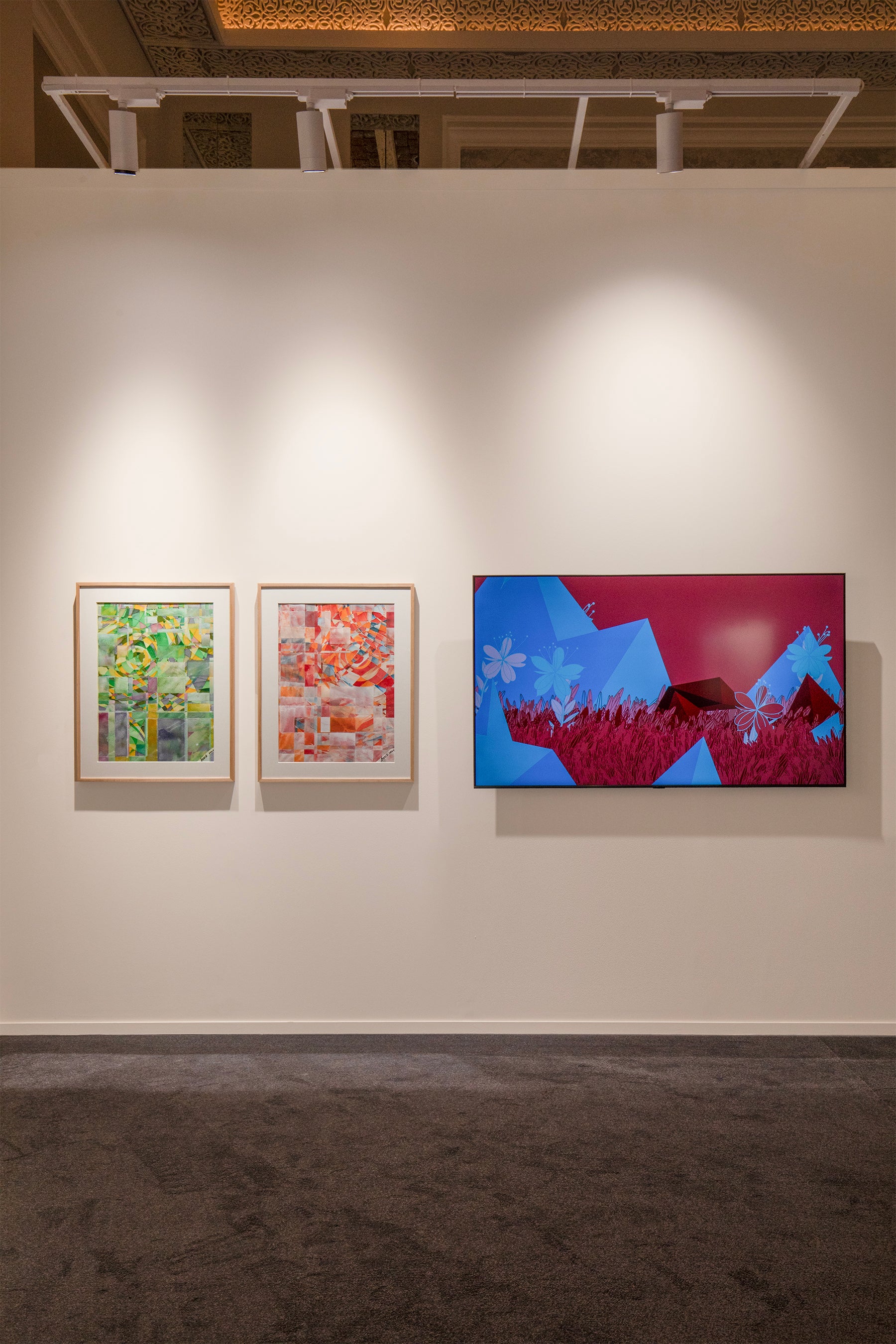2025 marks the 10th anniversary of GAZELL.iO, Gazelli Art House’s digital programme. Across the decade over 100 artists have taken part in online residencies and associated events and exhibitions. For Art Dubai Digital we are delighted to present works by seven notable and pioneering previous residents — Sougwen Chung, CROSSLUCID, Primavera De Filippi, Licia He, Zach Lieberman, Monica Rizzolli and Adesola Yusuf. Their projects explore a technological past, present and speculative future, using new tools to weave together tradition and innovation. Each artist unveils a unique visual language and narrative, creating a collective experience that invites viewers to question and reshape their perceptions.
-
The Way of Flowers: Seed 3205718451
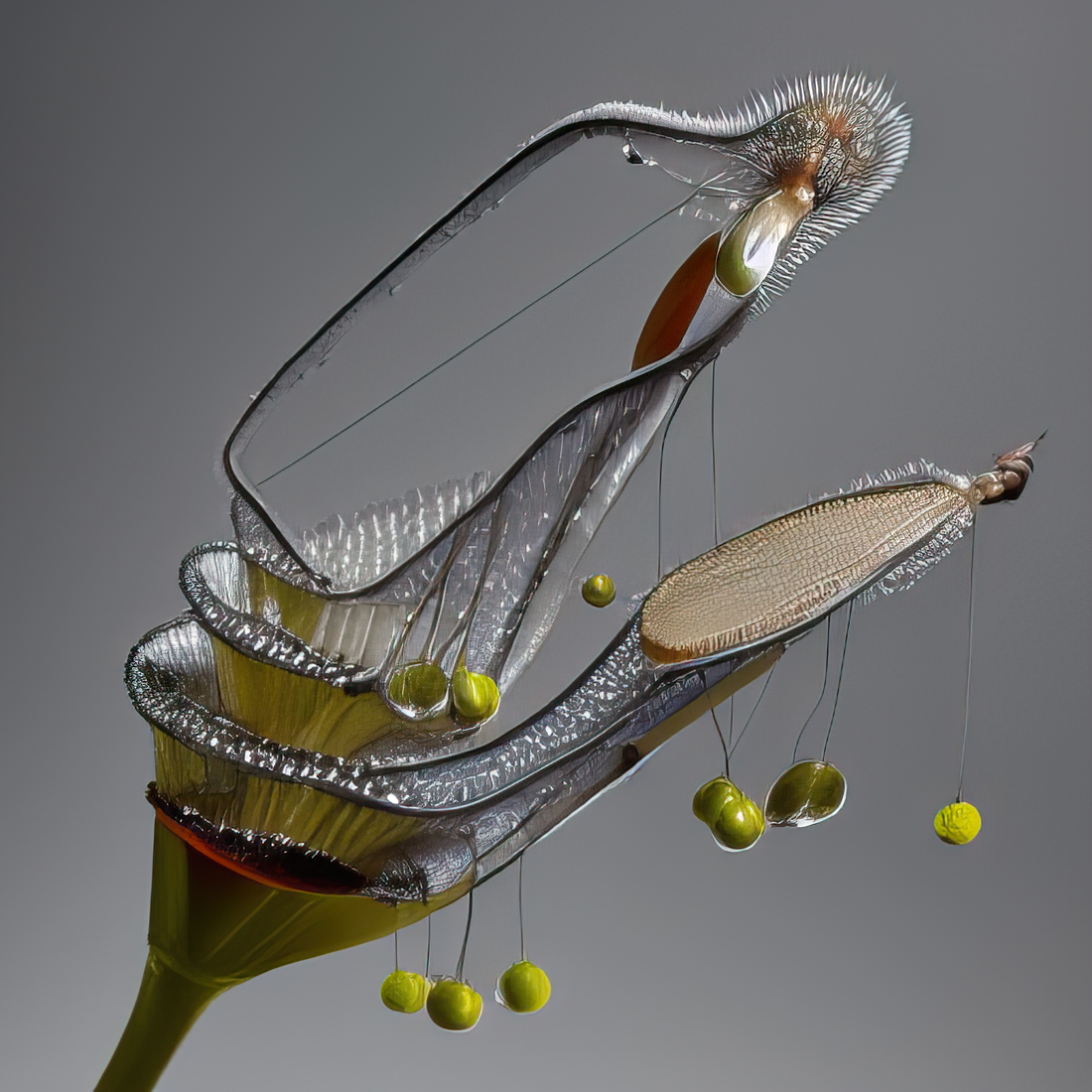 Vendor:The Way of Flowers: Seed 3205718451CROSSLUCID
Vendor:The Way of Flowers: Seed 3205718451CROSSLUCID
2023
UV print on aluminium
- Regular price
-
$4,000.00 - Regular price
-
- Sale price
-
$4,000.00
-
The Way of Flowers: Seed 3053284983
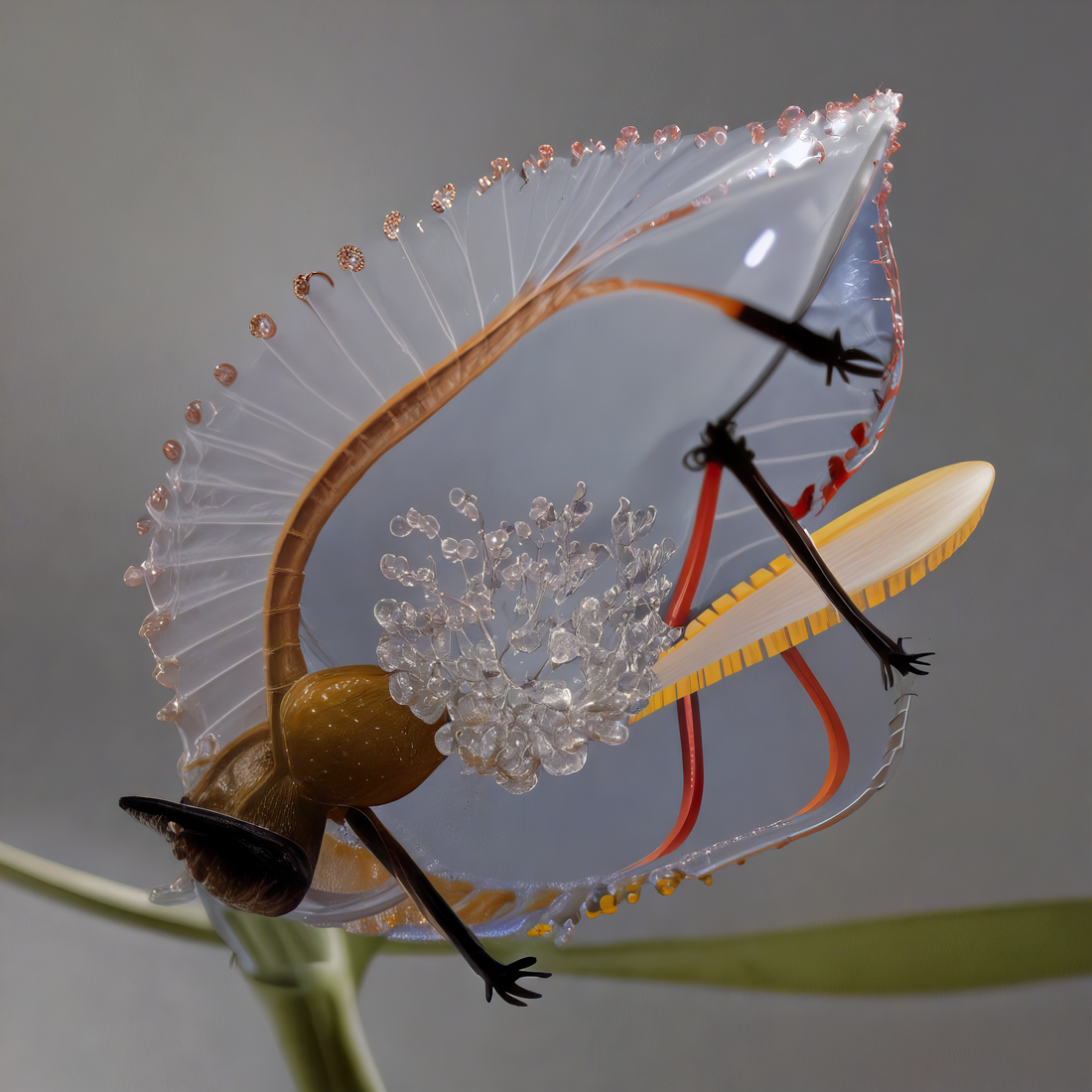 Vendor:The Way of Flowers: Seed 3053284983CROSSLUCID
Vendor:The Way of Flowers: Seed 3053284983CROSSLUCID
2023
UV print on aluminium
- Regular price
-
$4,000.00 - Regular price
-
- Sale price
-
$4,000.00
-
The Way of Flowers: Seed 1340150360
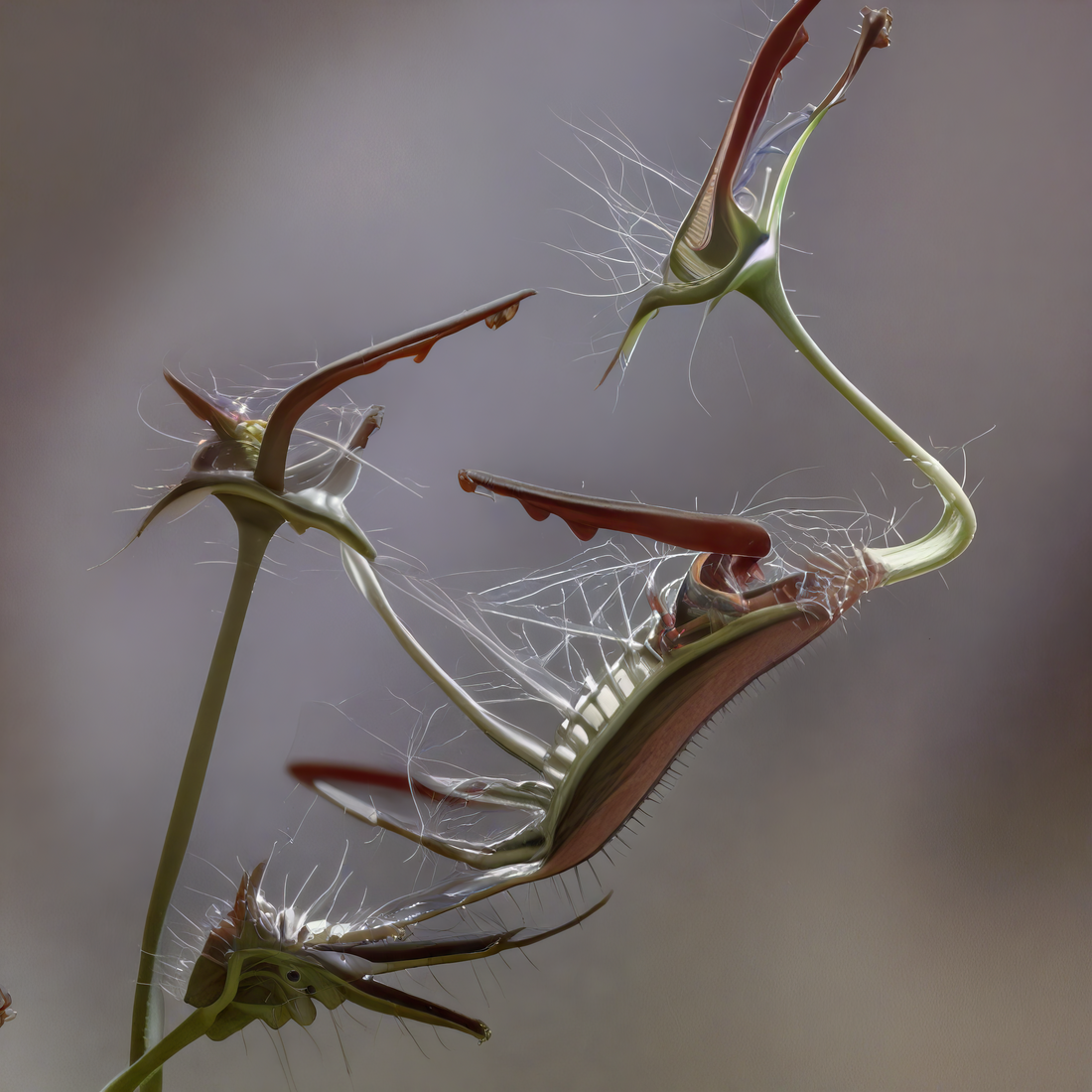 Vendor:The Way of Flowers: Seed 1340150360CROSSLUCID
Vendor:The Way of Flowers: Seed 1340150360CROSSLUCID
2023
UV print on aluminium
- Regular price
-
$4,000.00 - Regular price
-
- Sale price
-
$4,000.00
-
The Way of Flowers: Seed 1484490556
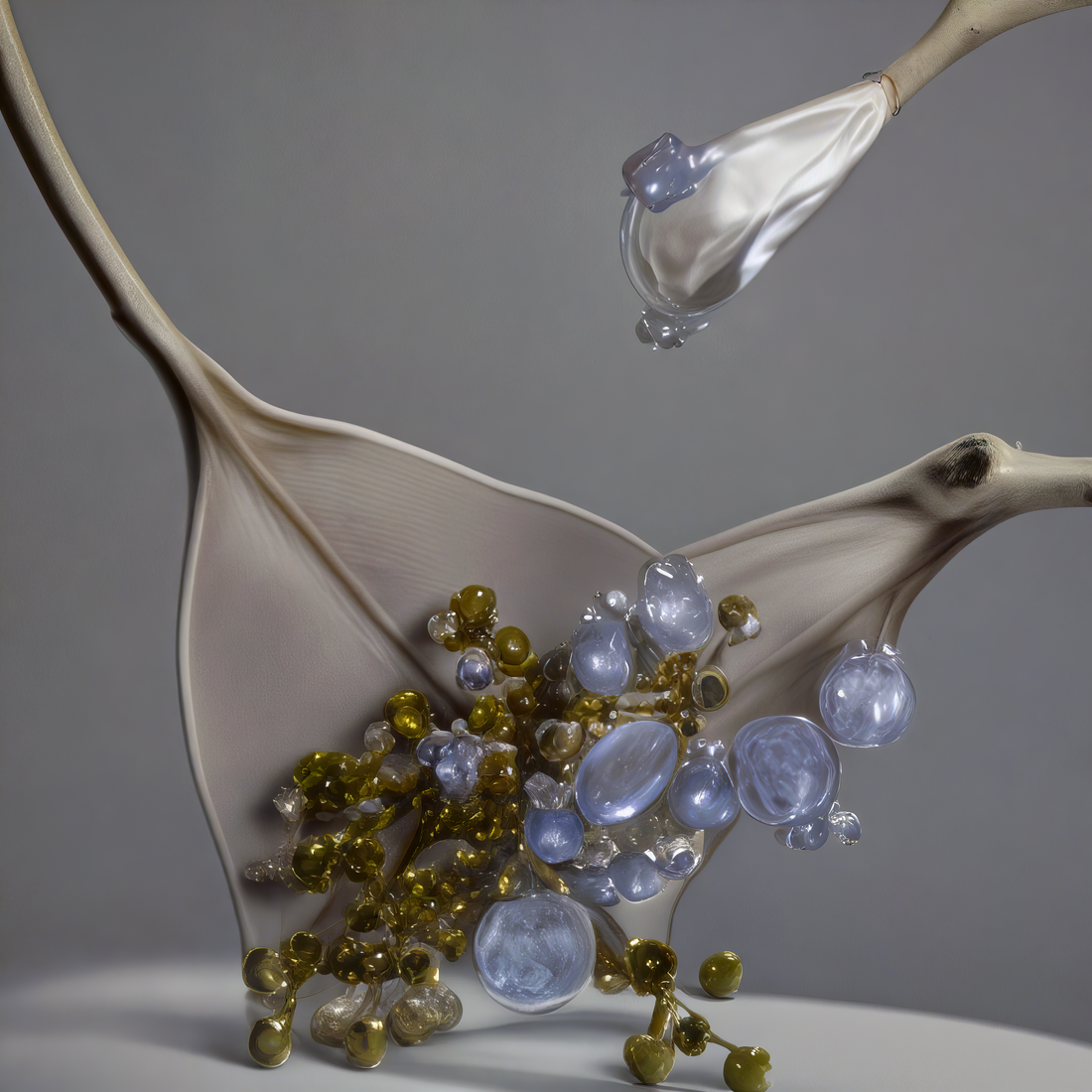 Vendor:The Way of Flowers: Seed 1484490556CROSSLUCID
Vendor:The Way of Flowers: Seed 1484490556CROSSLUCID
2023
UV print on aluminium
- Regular price
-
$4,000.00 - Regular price
-
- Sale price
-
$4,000.00
-
Arborithms
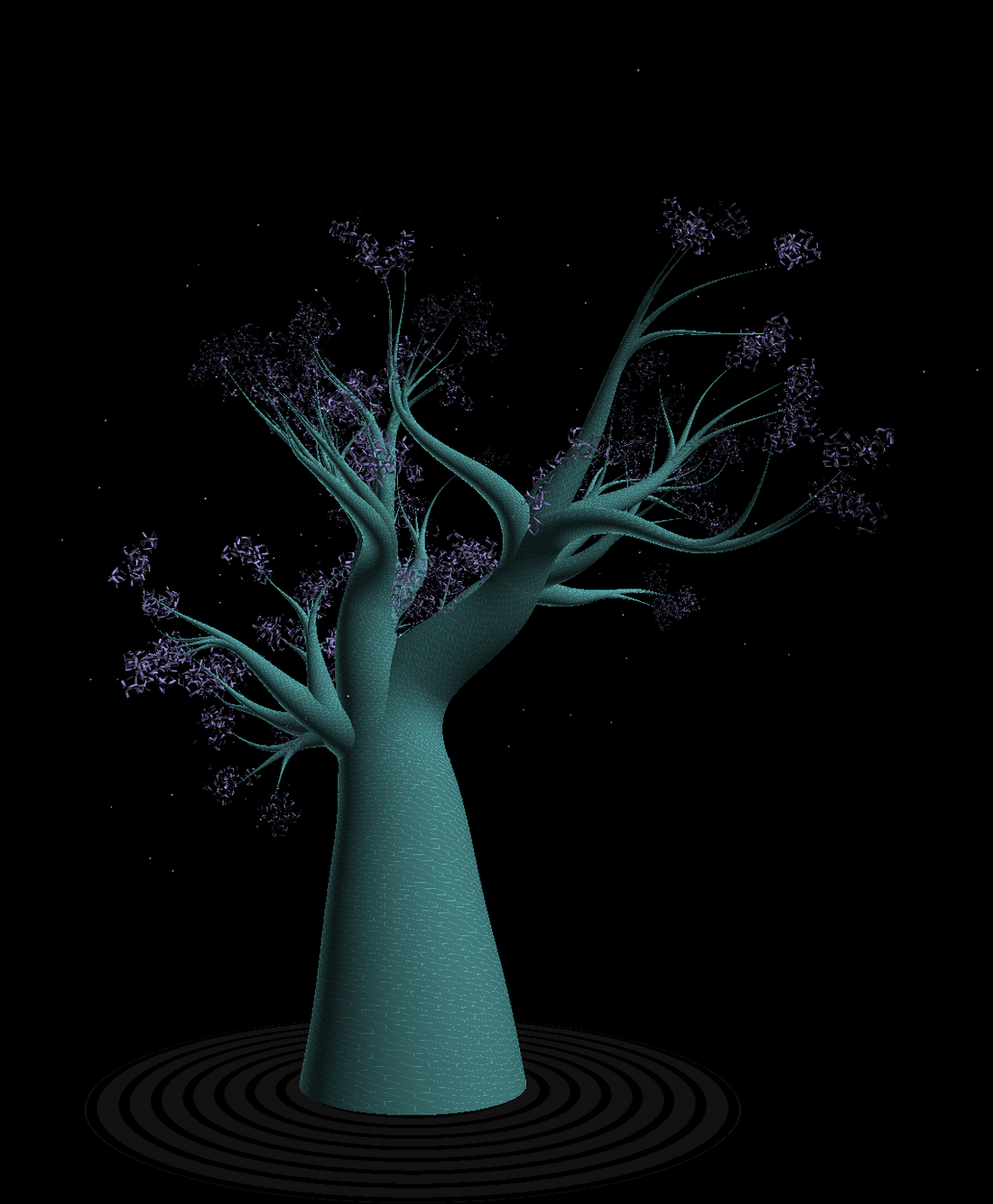 Vendor:ArborithmsPrimavera De Filippi
Vendor:ArborithmsPrimavera De Filippi
2025
ERC-721 token
- Regular price
-
$500.00 - Regular price
-
- Sale price
-
$500.00
-
Well -- I -- I -- I…
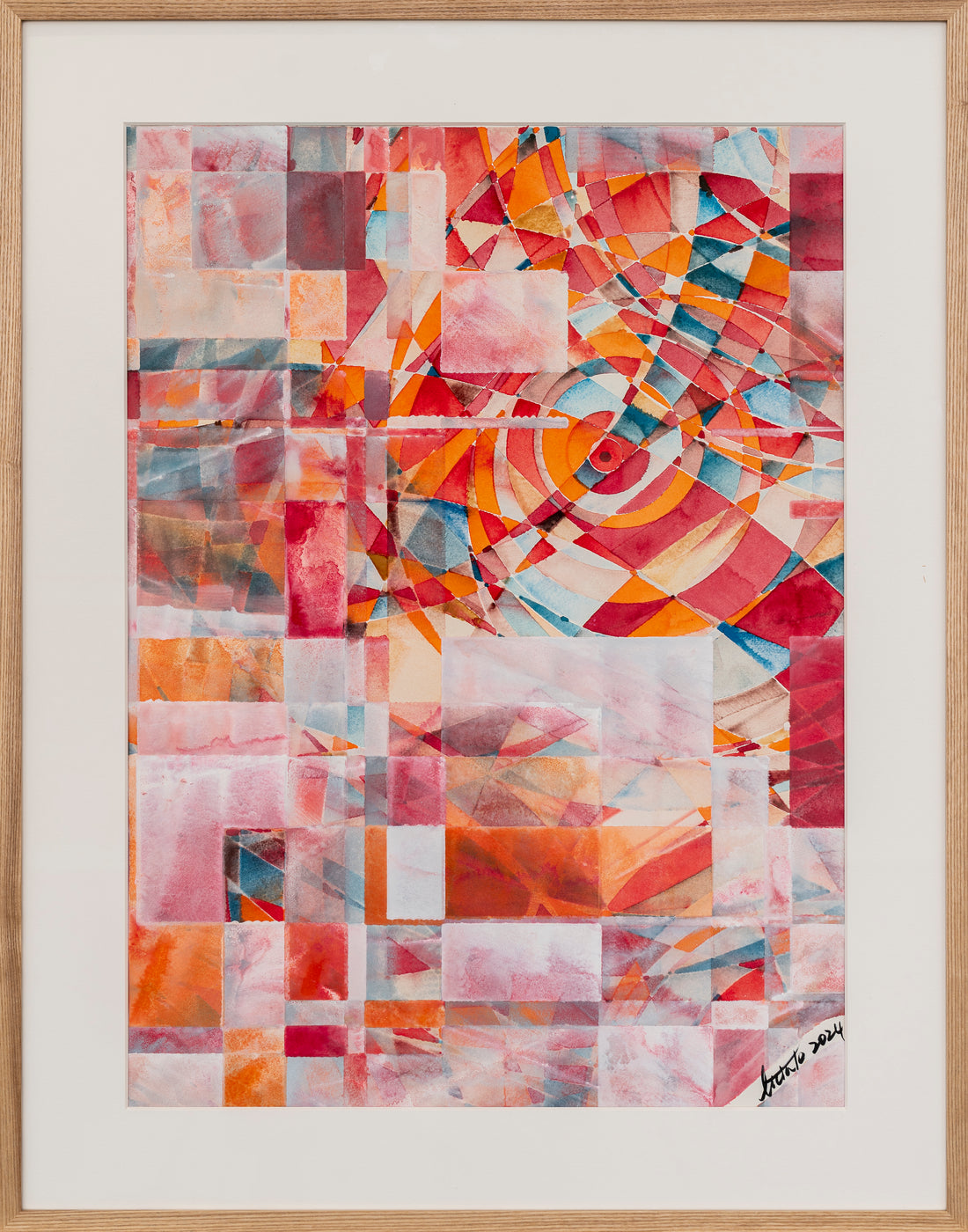 Vendor:Well -- I -- I -- I…Licia He
Vendor:Well -- I -- I -- I…Licia He
2024
Python-based algorithm, mixed watermedia (watercolour, gouache, and acrylic) on cotton paper
- Regular price
-
$11,208.00 - Regular price
-
- Sale price
-
$11,208.00
-
No -- no -- no -- not yet.
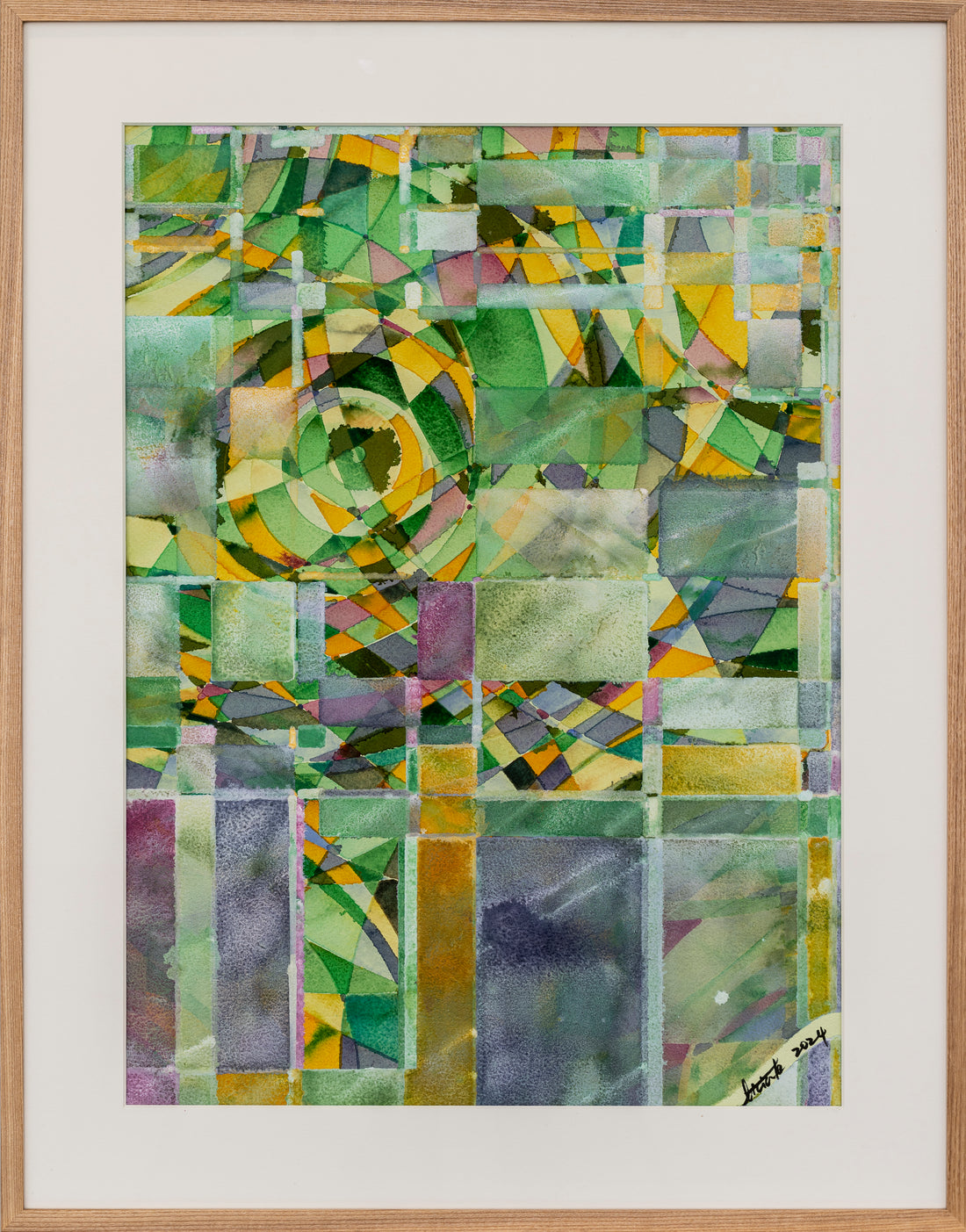 Vendor:No -- no -- no -- not yet.Licia He
Vendor:No -- no -- no -- not yet.Licia He
2024
Plotter-rendered generative painting from the series An Argument. Python- based algorithm, mixed watermedia (watercolour and acrylic) on cotton paper
- Regular price
-
$11,208.00 - Regular price
-
- Sale price
-
$11,208.00
-
Circle Stripe Study #1
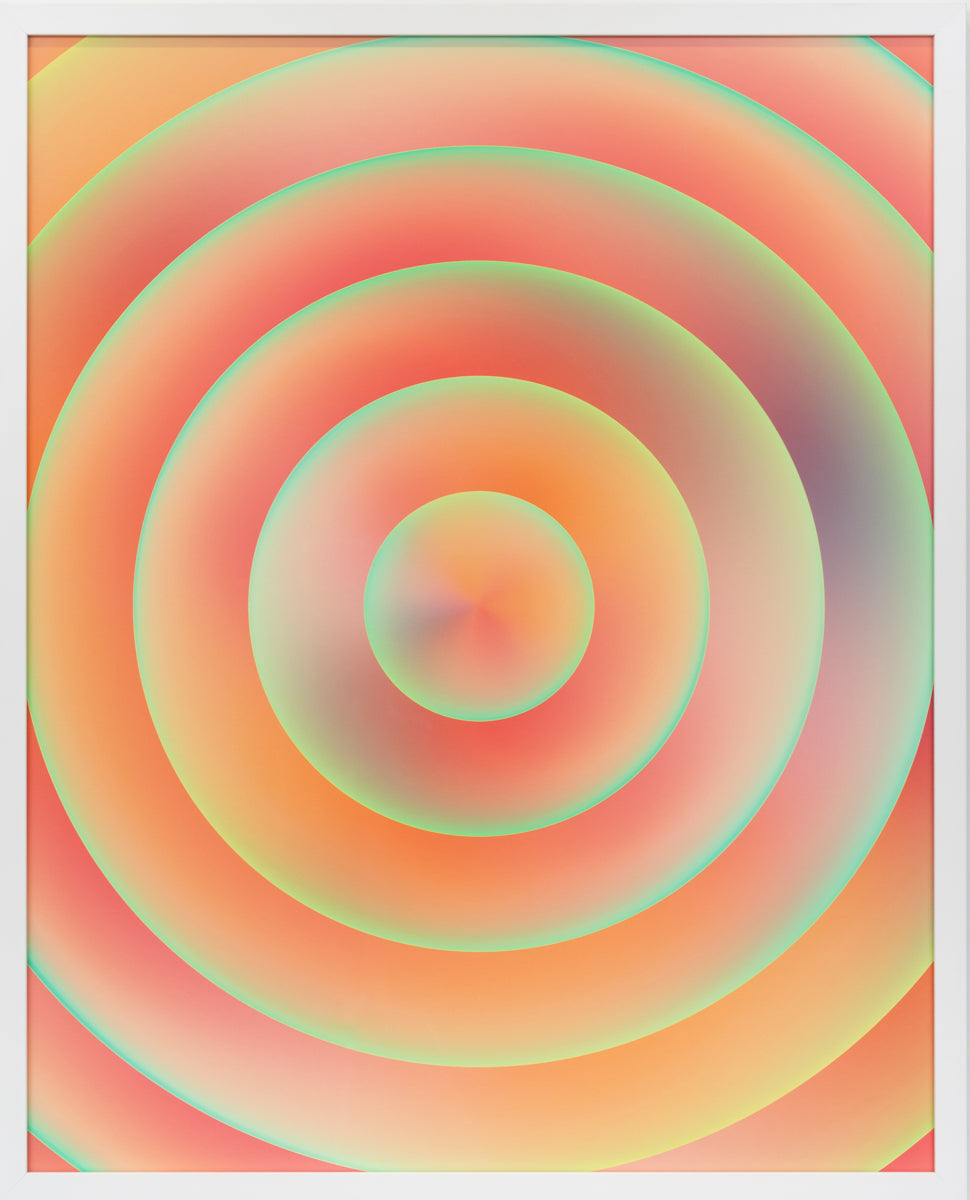 Vendor:Circle Stripe Study #1Zach Lieberman
Vendor:Circle Stripe Study #1Zach Lieberman
2024
Giclée on Hahnemühle Photorag accompanied by an ERC-721 token certified by Verisart
- Regular price
-
- Sale price
-
$1,800.00
-
Circle Stripe Study #3 (w/ Radial cones)
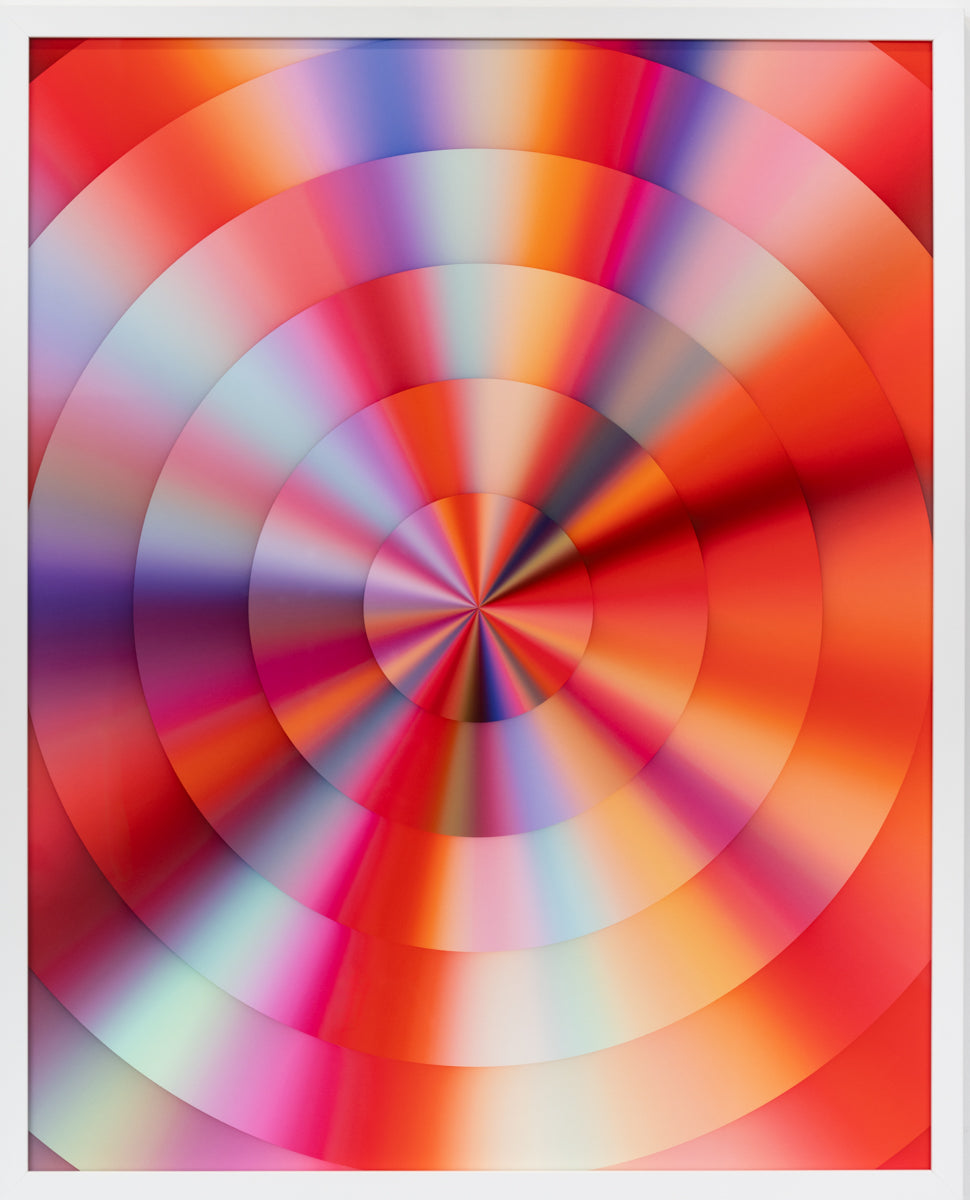 Vendor:Circle Stripe Study #3 (w/ Radial cones)Zach Lieberman
Vendor:Circle Stripe Study #3 (w/ Radial cones)Zach Lieberman
2024
Giclée on Hahnemühle Photorag accompanied by an ERC-721 token certified by Verisart
- Regular price
-
$2,000.00 - Regular price
-
- Sale price
-
$2,000.00
-
Circle Stripe Study #2 (w/ Radial cones)
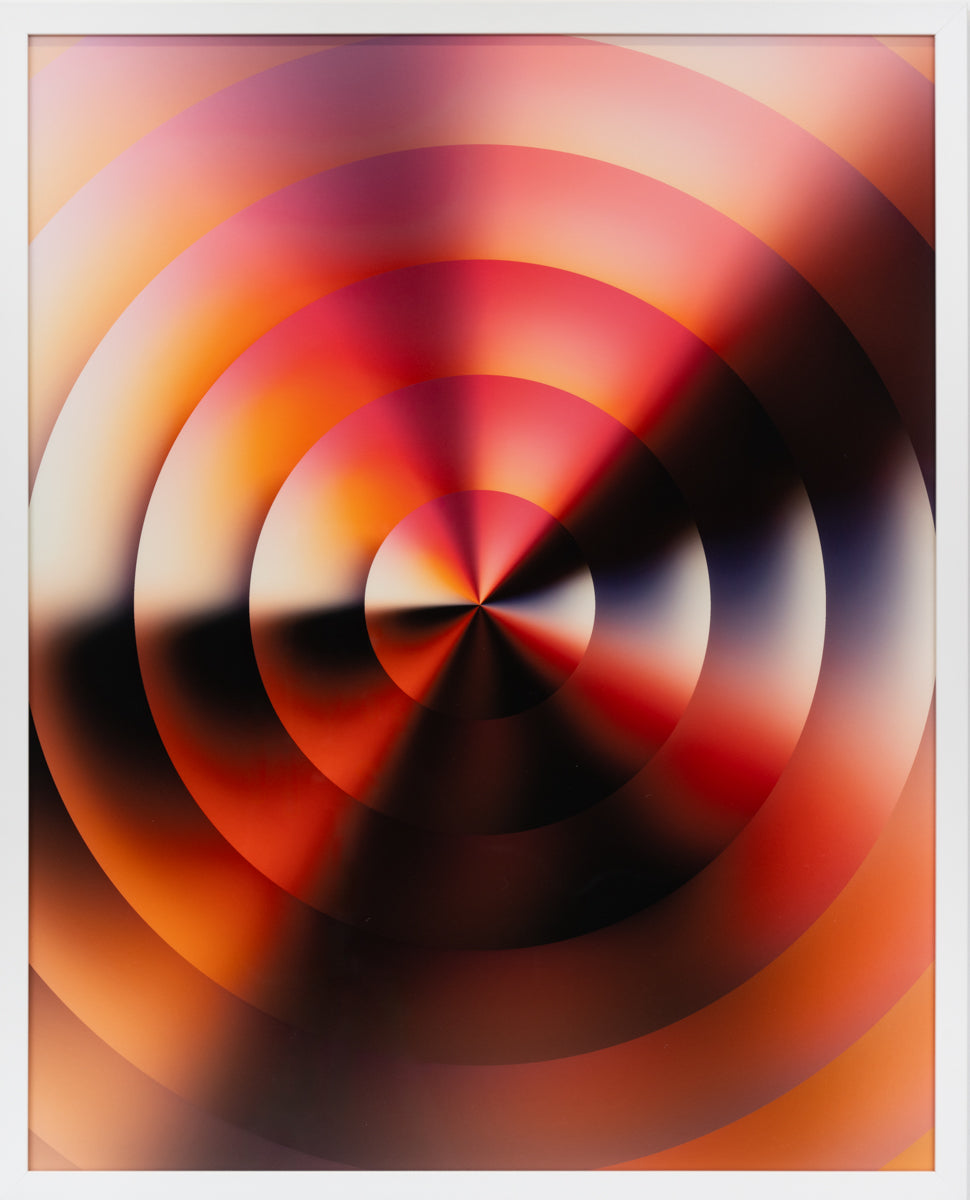 Vendor:Circle Stripe Study #2 (w/ Radial cones)Zach Lieberman
Vendor:Circle Stripe Study #2 (w/ Radial cones)Zach Lieberman
2024
Giclée on Hahnemühle Photorag accompanied by an ERC-721 token certified by Verisart
- Regular price
-
$2,000.00 - Regular price
-
- Sale price
-
$2,000.00
-
Circles w/ Cone Gradients
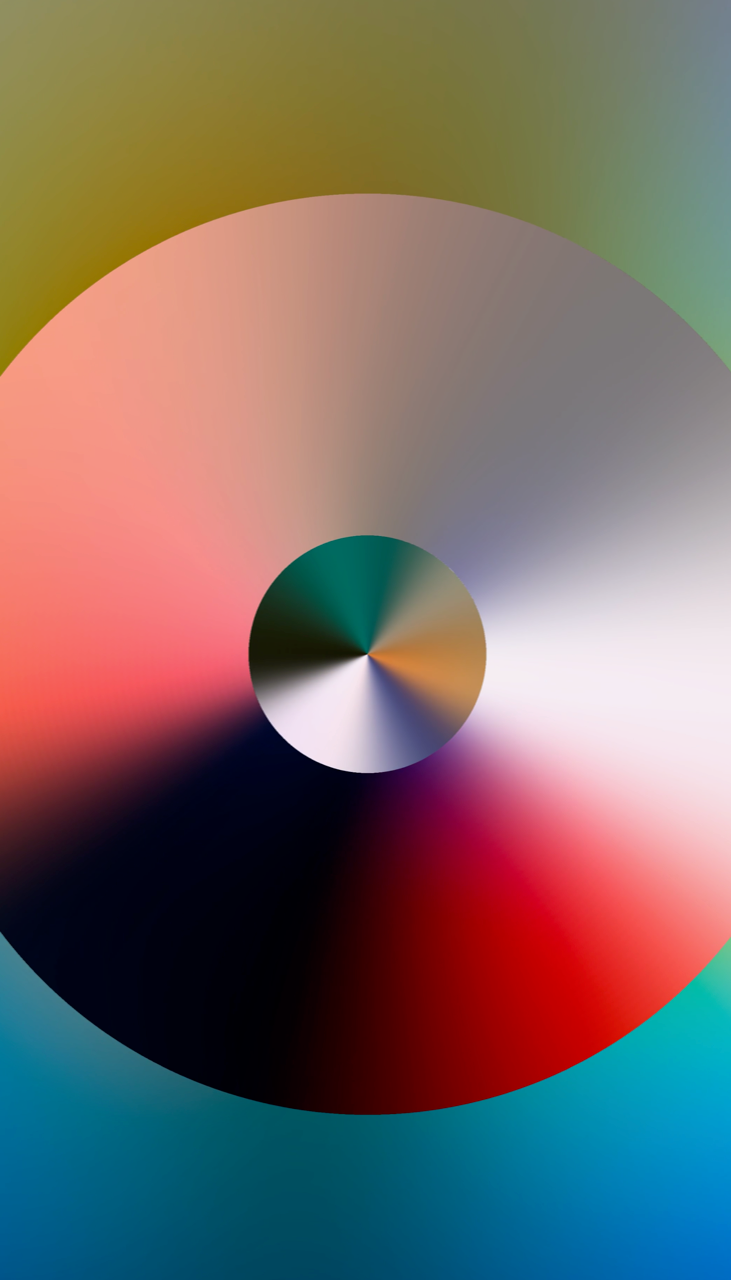 Vendor:Circles w/ Cone GradientsZach Lieberman
Vendor:Circles w/ Cone GradientsZach Lieberman
2024
MP4, ERC-721 token certified by Verisart
- Regular price
-
$5,000.00 - Regular price
-
- Sale price
-
$5,000.00
-
Dance to forgotten noise
 Vendor:Dance to forgotten noiseMonica Rizzolli
Vendor:Dance to forgotten noiseMonica Rizzolli
2023
Custom software (colour, silent), generative, interactive JavaScript (p5.js), HTML & CSS
- Regular price
-
$70,000.00 - Regular price
-
- Sale price
-
$70,000.00
-
Do You To LoFi?
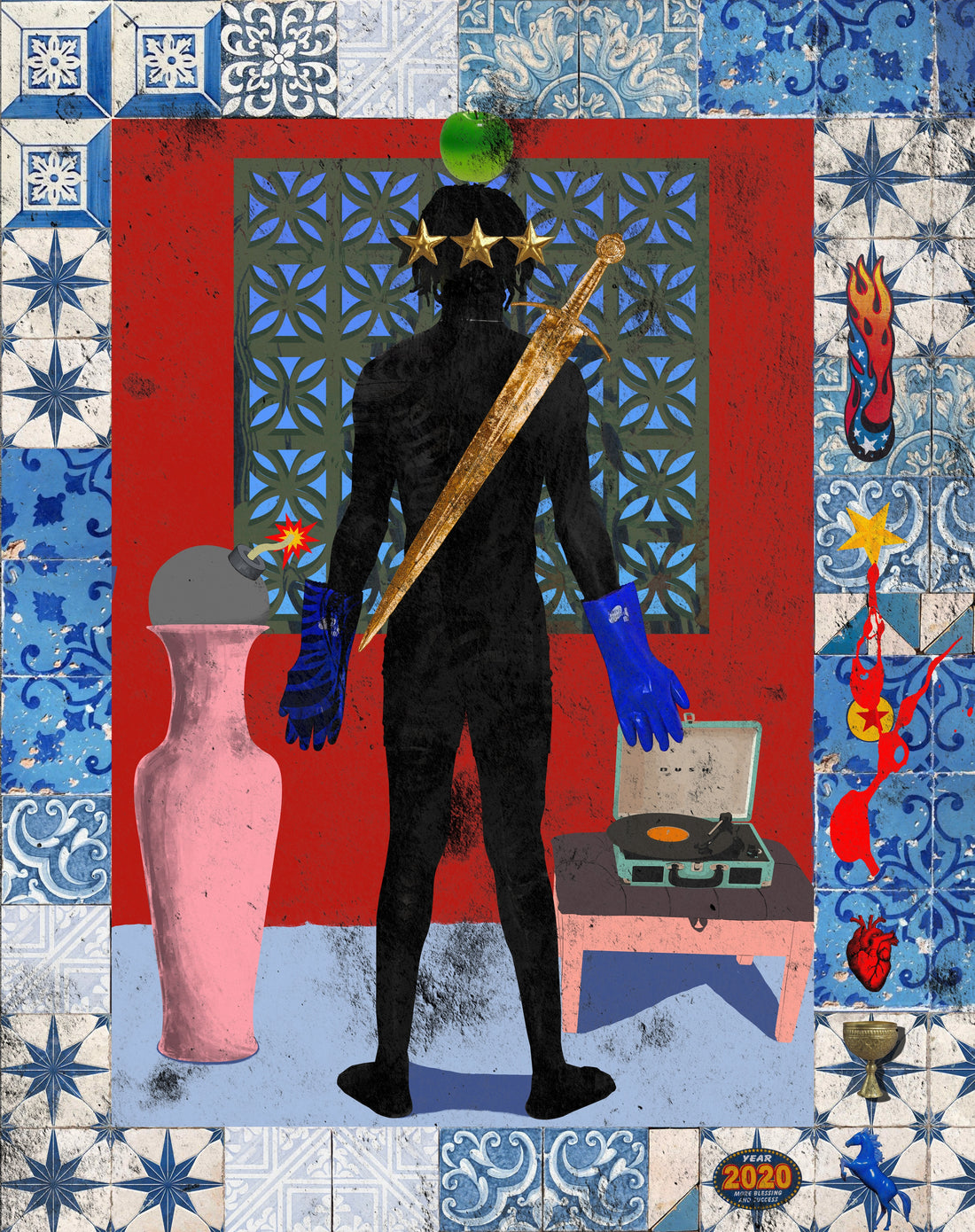 Vendor:Do You To LoFi?Adesola Yusuf
Vendor:Do You To LoFi?Adesola Yusuf
2025
Digital collage print accompanied by an ERC-721 token
- Regular price
-
$4,000.00 - Regular price
-
- Sale price
-
$4,000.00
-
Attension seeker.
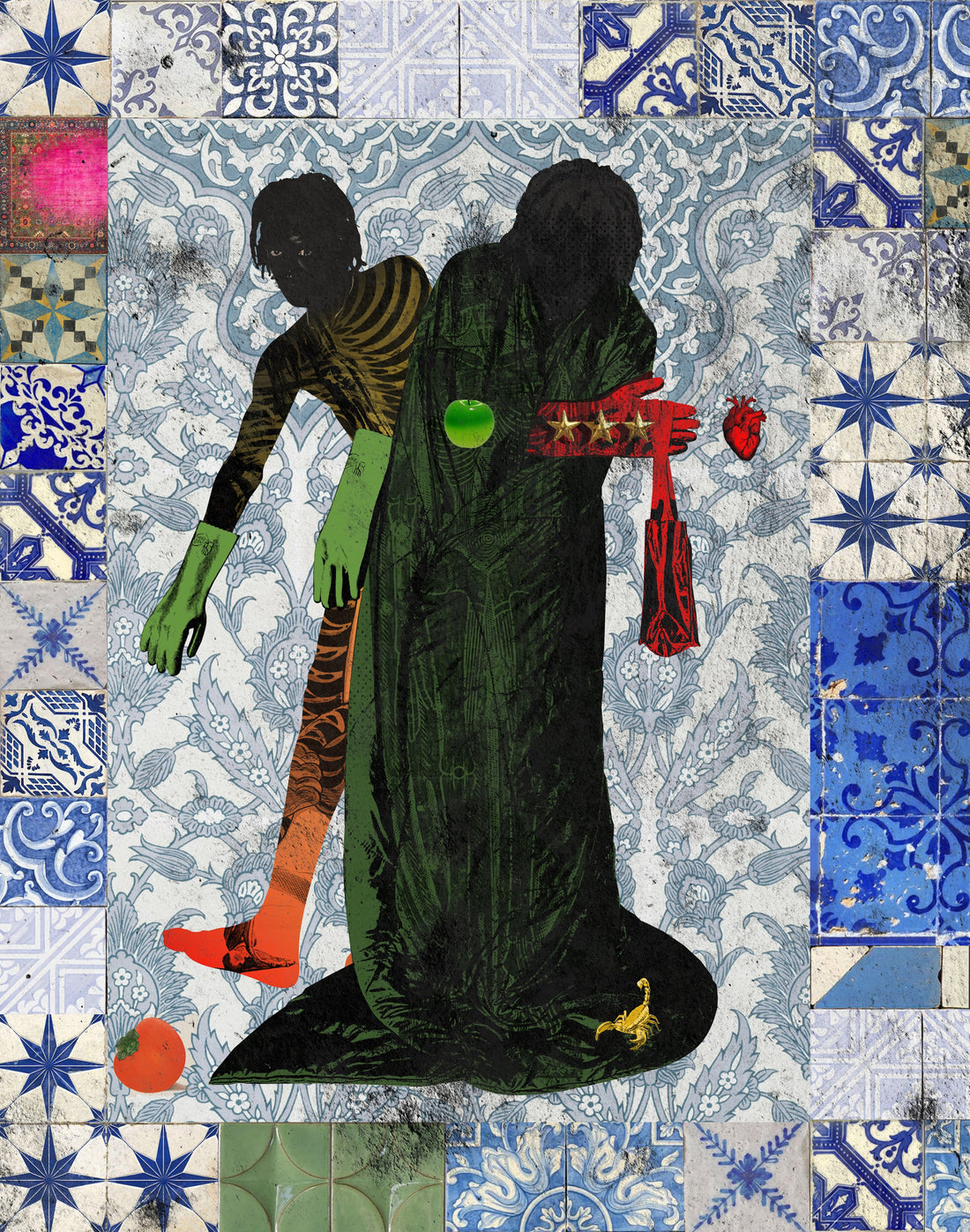 Vendor:Attension seeker.Adesola Yusuf
Vendor:Attension seeker.Adesola Yusuf
2025
Digital collage print accompanied by an ERC-721 token
- Regular price
-
$4,000.00 - Regular price
-
- Sale price
-
$4,000.00
Growth Patterns
Installation Views
About the Artists
Sougwen Chung
Multidisciplinary artist Sougwen Chung (b. 1985) combines hand-drawn and computer-generated marks to address the proximity of human-machine collaboration. In 2024, they were recognised with a TIME100 Impact Award for their influence on the field of artificial intelligence. Their speculative critical practice spans installation, sculpture, still image, drawing, and performance, exploring the mark-made-by-hand and the mark-made-by-machine as an approach to understanding the dynamics of humans and systems. Chinese-Canadian Chung is a former researcher at MIT Media Lab, Artist in Residence at Bell Labs and New Museum of Contemporary Art in New York, and founder and artistic director of Scilicet, a London based studio exploring human & non-human collaboration. Chung received the Lumen Prize for Art in Technology, and their work has been collected by institutions such as the Victoria & Albert Museum. They have been featured in numerous exhibitions at museums and galleries around the world such as: the Espoo Museum of Modern Art, Espoo; Vancouver Art Gallery, Vancouver; Art Basel, Miami; National Art Center, Tokyo; NTT InterCommunication Center [ICC], Tokyo, Japan; ArtScience Museum, Singapore; MIT Media Lab, Cambridge; The Drawing Center, New York; The New Museum, New York; Museum of Contemporary Art, Geneva; Mana Contemporary, New York, Tribeca Film Festival, New York; The Hospital Club, London; Mutek Festival, Tokyo, Montreal & Mexico City; Sonar Festival, Barcelona.
CROSSLUCID
CROSSLUCID (f. 2018) is an artist collective founded in 2018 that engages in highly collaborative cross-disciplinary projects in co-evolution with technology. Their work and research converge around the exploration of the self as a network; intimacy and the potential for pleasurable actualisation through the digital sphere, and the re imagination of our alliances with technology seen as part of a sympoietic biosphere and universal post-material consciousness. Through filmmaking, poetic artificial intelligence, multi-layered techniques of collage, assemblage and experience-led interventions they create scenarios and build experiential formats that instigate prototyping and rehearsing potential futures and progressing metamodern values. Their work has been exhibited and showcased by iMAL in Belgium; Vellum LA; Epoch Gallery; The Osaka Museum of Fine Arts, Osaka; SXSW; Expanded Art; Art Encounters Biennial, Zagreb Museum of Contemporary Art; AI Biennial Germany; NOWNESS; Google Arts & Culture; wrong biennial; LUX Moving Image; Garage Rotterdam; Art Basel Miami; The Lobkowicz Palace; and ARD Culture, amongst others.
Primavera De Filippi
Primavera De Filippi is an artist and legal scholar at Harvard University, exploring the intersection between art, law and technology, focusing specifically on the legal and political implications of blockchain technology. Her artistic practice instantiates the key findings of her research in the physical world, creating blockchain- based lifeforms that evolve and reproduce themselves as people feed them with cryptocurrencies. Her works have been exhibited in various museums, galleries and art fairs around the world including: Ars Electronica and Francisco Carolinum, Linz; HeK Museum of Digital Arts, Basel; Kate Vass Gallery, Zurich; Furtherfield Gallery and Kinetica Art Fair, UK; Centre Pompidou, Grand Palais, Gaité Lyrique, and Le Cent Quatre, Paris; Palazzo Cipolla and Biennale di Venezia, Italy; Fort Mason Center For Arts & Culture, San Francisco; as well as festivals such as Burning Man, Nevada, Fusion Festival, Germany and Synesthesia, Portugal, and online galleries like Feral File.
Licia He
As a generative artist and human-computer interaction researcher, Shiqing (Licia) He employs an expressive visual language alongside technological innovations to communicate emotion and experiences. Her works have been exhibited and collected worldwide, with recent exhibitions including GEN/ GEN: Generative Generations at Gazelli Art House, and shows via Art Blocks, Bright Moments, and Feral File. Licia He grew up in China and currently resides in London, UK. Her cross-disciplinary artworks often use multicultural experiences as inspirations. She holds a Bachelor of Science degree in Studio Art and Computer Science, and a PhD in
Information Science. Focused on the connections between art and technology throughout her doctoral study at the University of Michigan, School of Information, He researched and published in areas such as data visualisation, human- machine interaction, and creativity support tools. Around 2018, Licia He ventured into the world of generative art to connect her passion for visual art and programming. She previously served as an assistant professor at Texas A&M University, School of Performance, Visualization, and Fine Art, where she founded the Generative Craft Lab.
Zach Lieberman
Zach Lieberman (b. 1977) is currently a professor at MIT’s Media Lab, where he explores the essence of code as a creative medium in the Future Sketches group. Interested in generative and interactive systems, he playfully examines human and machine relations, employing technologies in unexpected and poetic ways. Lieberman is celebrated for his development of OpenFrameworks, an open-source C++ toolkit for creative coding. He is also a co-founder of the School of Poetic Computation, an artist-run school in New York that was founded in 2013. Here a small group of students and faculty work closely to explore the intersections of code, design, hardware and theory — focusing especially on artistic intervention. Among his many accolades, Lieberman has won the prestigious Golden Nica award from Ars Electronica, and his groundbreaking project EyeWriter has been exhibited multiple times at MoMA, New York.
Monica Rizzolli
Monica Rizzolli (b. 1981) is a self-taught coder who uses an ecological approach to art-making, viewing humans, art, and code as components of nature. Via botanical motifs, Rizzolli creates collections of unique works that stem from a single code. Rizzolli was drawn to generative art for the mediums’ conceptual potential to represent all manner of possible scenarios. Rizzolli began as a painter, and began studying creative programming while at Kunsthochschule Kassel, Germany. The artist presented her first generative work in 2015, at MAK Center for Art and Architecture funded by the MAK Schindler research grant. In Brazil, the artist co-created the creative programming meeting, Noite de Processing, at Garoa Hacker Clube and was involved in organising the Processing Community Day Brazil. In design, Rizzolli has developed generative magazine covers, fabric designs, and typefaces with Tony de Marco, including Tomorrow for Google Fonts. In 2021 she launched the Fragments of an Infinite Field series on the Art Blocks platform, which solidified her position in the generative art field.
Adesola Yusuf
Abdulrahman Adesola Yusuf (Arclight) (b. 1997) is a multidisciplinary artist blending digital and traditional techniques. A graduate of Yaba College of Technology (HND, Graphic Design, 2018), he draws inspiration from the High Renaissance, Baroque, and Rococo periods, infused with the bold vibrancy of Pop Art and Post- Internet Art. His work serves as a “visual soliloquy,” using dynamic colours and layered compositions to explore personal narratives, sociopolitical themes, and the cultural landscape of Lagos. Incorporating photography, digital tools, and at times, 3D software and augmented reality, he navigates the intersection of tradition and technology. In 2022, GAZELL.iO presented his solo exhibition, ORDER & LAGOS, a series of works reflecting his lived experiences in Lagos, balancing themes of hardship and resilience.


